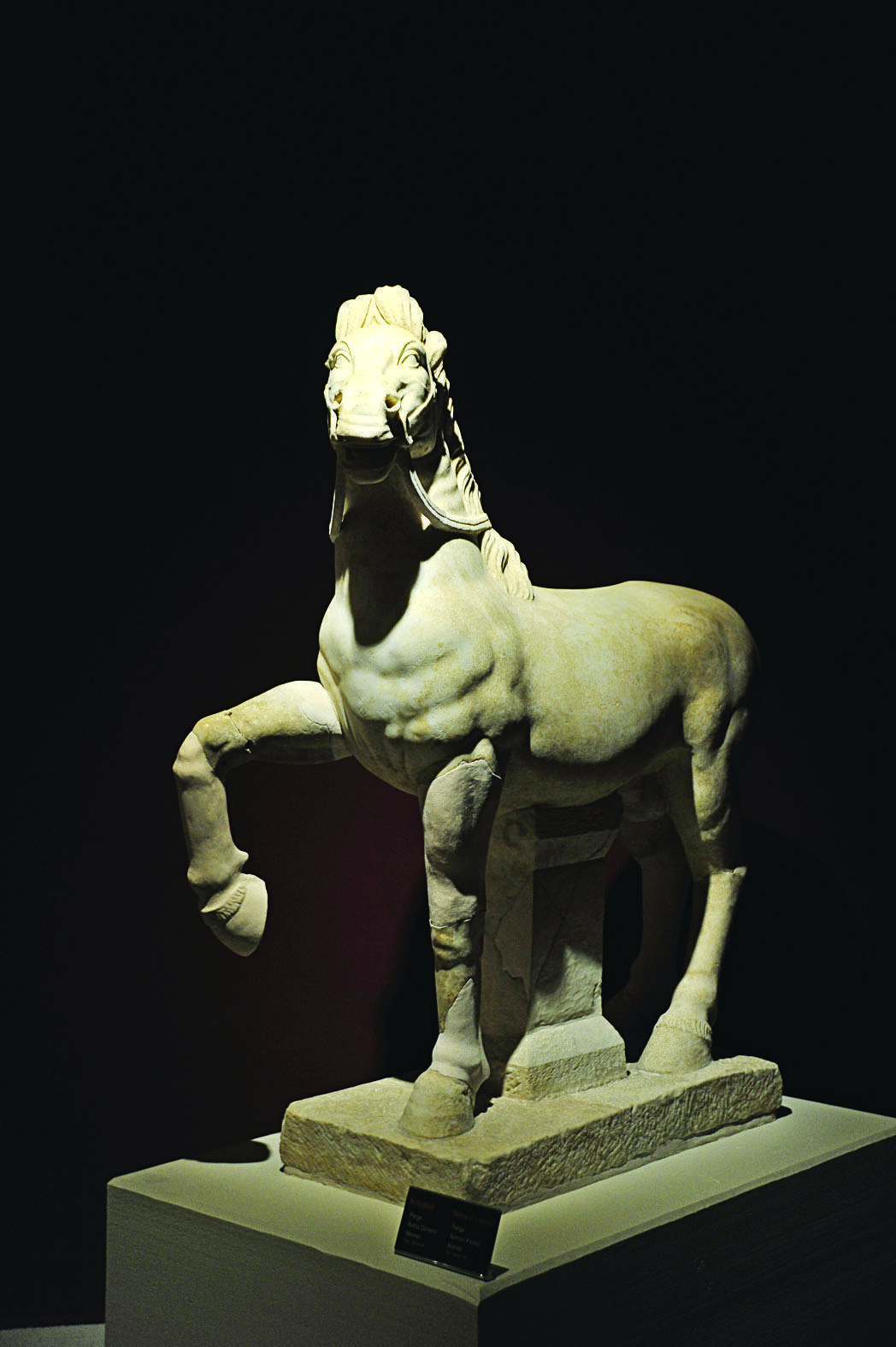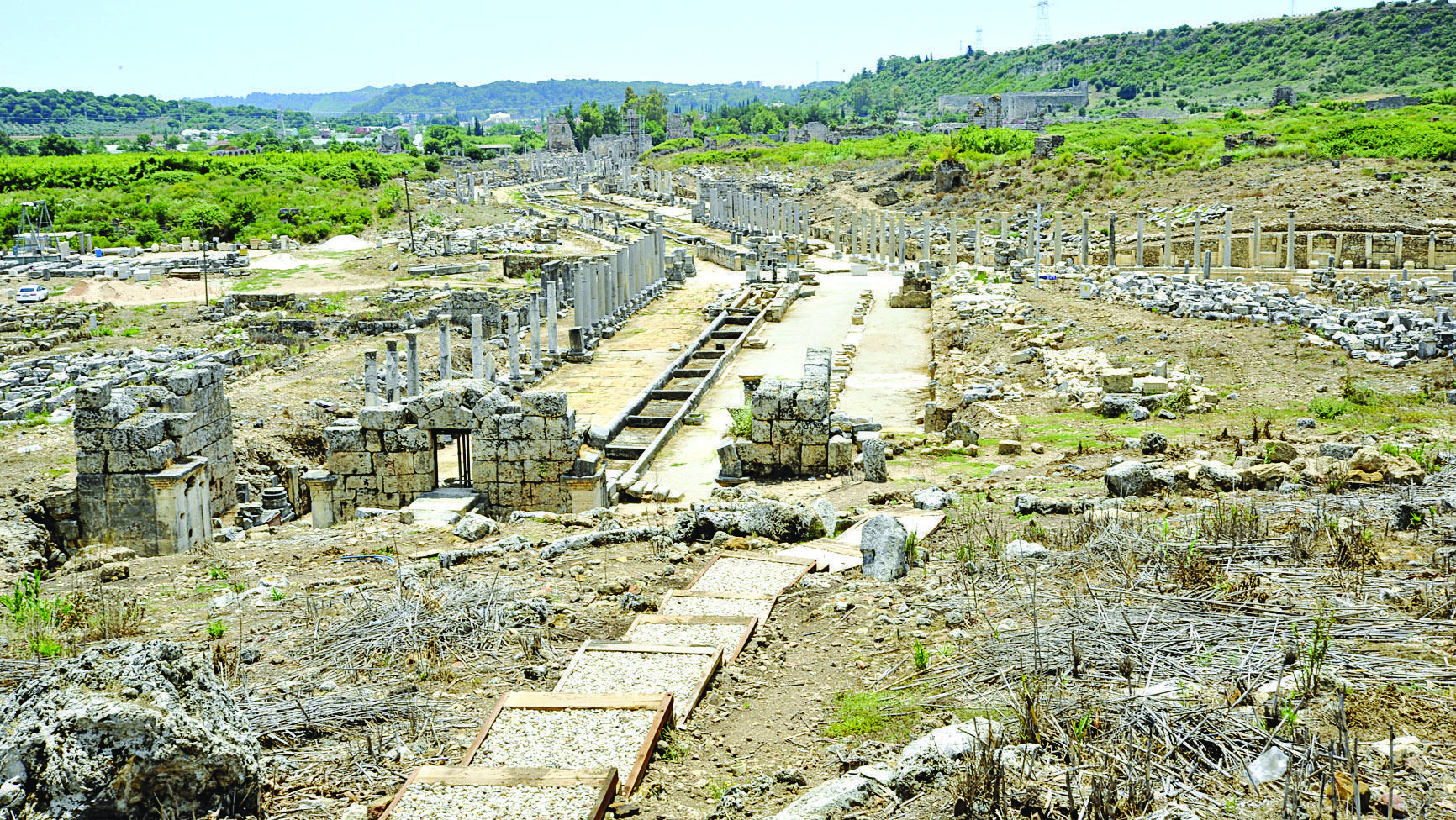Ancient city of Perge rich in sculptures
ANTALYA – Anadolu Agency

AA Photos
Archaeological excavations, which have continued for the last three years in the ancient city of Perge, located in the southern province of Antalya, have revealed 13 rare sculptures. Among the recently discovered sculptures were the Roman emperor Caracalla and a number of Greek gods and goddesses, including moon goddess Selene and fortune goddess Tykhe, as well as a detailed horse sculpture.

The sculptures have come to the light in the ancient city of Perge, which lies within the borders of the Aksu district, 17 kilometers away from Antalya city center.
For the last three years, the Antalya Museum has been carrying out excavations and the 13 sculptures found during this process have been put on display in the Perge Hall inside the museum.
The head of Perge excavations and Antalya Museum Director Mustafa Demir said the Perge excavations had been conducted by Istanbul University and handed over to the museum by the Culture and Tourism Ministry in 2012.
He said they had reached the gate opening to the necropolis (large cemetery) in the end of the western street of the ancient city between 2012 and 2014.
“We continued this work this year, too. We focused on the rehabilitation of the field on the northern-southern street for visitors to walk easily. One of the structures that made us very pleased during the work was a fountain next to the northern bath. We found the Caracalla sculpture inside this fountain structure. The Caracalla sculpture is the only in the world found as a whole,” Demirel said.
Among the sculptures found in this area were mythological gods and goddesses as well as a horse sculpture and an Aphrodite sculpture, said Demirel, adding the Perge Hall had been opened on May 18 for the display of these artifacts.
He said they had been working for the last two years with the support of Cultural Heritage and Museums General Director Abdullah Kocapınar, adding a nearly 350-square-meter area in the ancient city had been excavated in three years.
Sculptures unearthed in three years
Caracalla: A sculpture of Roman Emperor Caracalla, who lived between 188 and 217. The nearly 220-centimeter high sculpture is the only sculpture of the emperor that still survives as a whole.
Horse: A 130-centimeter high sculpture found in front of the F5 Fountain in the western street. The anatomic details of the horse are depicted very clearly.

Selene: The daughter of Hyperion and Theia, the sister of the sun goddess Helios and the down goddess Eos. She was the goddess of the moon. The sculpture is two meters high.
Nemesis: The daughter of night goddess Nyks. The 170-centimeter tall sculpture wears a transparent, one-shouldered dress.
Tykhe: Named Fortuna in Latin, Tykhe was the goddess of fortune, considered a honored person and the main goddess of Perge.
Helios: The son of Hyperion and Theia and the god of the Sun. Being likened to Apollo, Helios is depicted as a strong and handsome man.
Asclepius: He is the son of Apollo and the god of health. The sculpture wears a one-shouldered dress and carries a ferula in his left hand and a plate of medicine in his right hand.
Aphrodite: The goddess of love and beauty. The body was found in its entirety; the head, right hand, left arm, legs, feet and pedestal were found in different pieces and merged.
Priest: The sculpture has two snake reliefs on its neck. The dressed sculpture has a horn-of-plenty in his right hand.
Athena: The goddess of intelligence, arts, strategy, inspiration and peace. Depicted as dressed and armored, the sculpture has very fine details.
Dressed woman: A headless female sculpture, wearing a long dress and a coat.
Dressed man: A headless male sculpture, holding a sword.

 The sculptures have come to the light in the ancient city of Perge, which lies within the borders of the Aksu district, 17 kilometers away from Antalya city center.
The sculptures have come to the light in the ancient city of Perge, which lies within the borders of the Aksu district, 17 kilometers away from Antalya city center. 
 Selene: The daughter of Hyperion and Theia, the sister of the sun goddess Helios and the down goddess Eos. She was the goddess of the moon. The sculpture is two meters high.
Selene: The daughter of Hyperion and Theia, the sister of the sun goddess Helios and the down goddess Eos. She was the goddess of the moon. The sculpture is two meters high. 